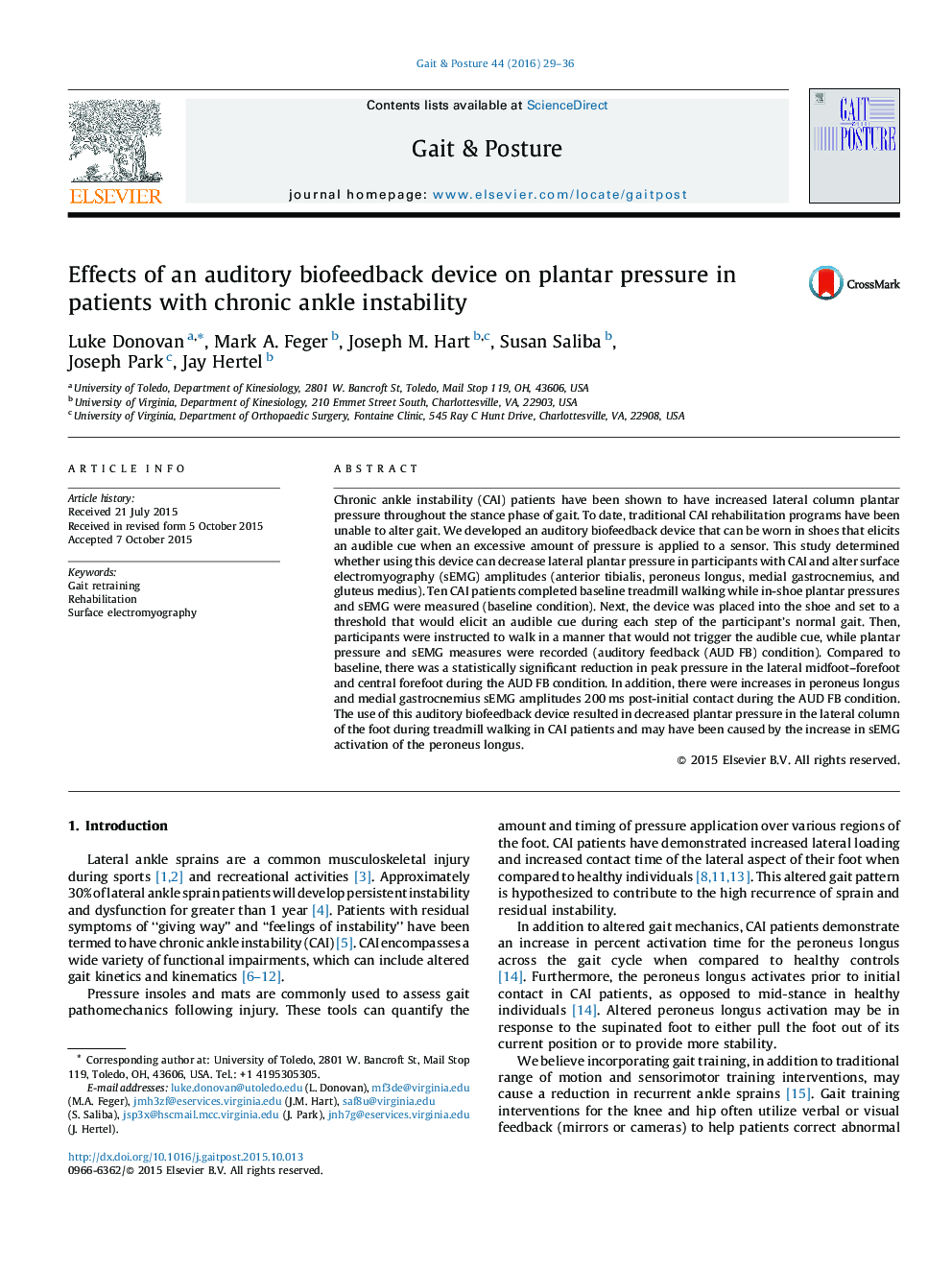| کد مقاله | کد نشریه | سال انتشار | مقاله انگلیسی | نسخه تمام متن |
|---|---|---|---|---|
| 4055532 | 1603851 | 2016 | 8 صفحه PDF | دانلود رایگان |
• First study to assess effectiveness of auditory biofeedback on gait in CAI patients.
• Auditory biofeedback can reduce lateral plantar pressure in CAI patients.
• Auditory biofeedback can increase peroneus longus activity during walking.
• Auditory biofeedback may be a useful clinical tool to improve gait in CAI patients.
Chronic ankle instability (CAI) patients have been shown to have increased lateral column plantar pressure throughout the stance phase of gait. To date, traditional CAI rehabilitation programs have been unable to alter gait. We developed an auditory biofeedback device that can be worn in shoes that elicits an audible cue when an excessive amount of pressure is applied to a sensor. This study determined whether using this device can decrease lateral plantar pressure in participants with CAI and alter surface electromyography (sEMG) amplitudes (anterior tibialis, peroneus longus, medial gastrocnemius, and gluteus medius). Ten CAI patients completed baseline treadmill walking while in-shoe plantar pressures and sEMG were measured (baseline condition). Next, the device was placed into the shoe and set to a threshold that would elicit an audible cue during each step of the participant's normal gait. Then, participants were instructed to walk in a manner that would not trigger the audible cue, while plantar pressure and sEMG measures were recorded (auditory feedback (AUD FB) condition). Compared to baseline, there was a statistically significant reduction in peak pressure in the lateral midfoot–forefoot and central forefoot during the AUD FB condition. In addition, there were increases in peroneus longus and medial gastrocnemius sEMG amplitudes 200 ms post-initial contact during the AUD FB condition. The use of this auditory biofeedback device resulted in decreased plantar pressure in the lateral column of the foot during treadmill walking in CAI patients and may have been caused by the increase in sEMG activation of the peroneus longus.
Journal: Gait & Posture - Volume 44, February 2016, Pages 29–36
